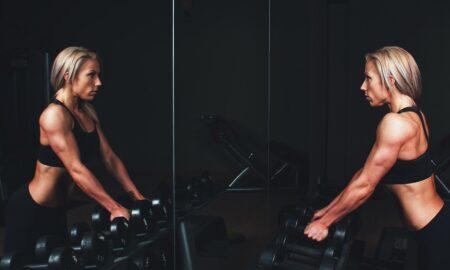I’ve addressed rotator cuff injuries and strengthening since this column began in 1989. The best-planned split routine can leave a trainee susceptible to shoulder injuries, particularly the rotator cuff muscles and tendons. That puzzles many trainees because they divide their workouts into a common split program: chest and back on one day, shoulders and arms on another day, and legs on a third day. Some use another common split of chest and triceps; shoulders, back and biceps; and legs. Regardless of how they split up their bodyparts, trainees still have shoulder problems related to their workouts.
Average trainees generally work their chest, usually with bench presses, and their biceps—and often forget their back and legs, as if they don’t exist or no one can see them. Advanced bodybuilders have excellent back development; however, the chest training and some of the back training can contribute to a posture problem—with shoulders pulled forward instead of a “good” posture with the shoulders pulled back, which is known as scapular retraction.
Posture is becoming a very hot topic in rehabilitation today. In 2003 a group of orthopedic surgeons, Morgan, Burhardt and Kibler, drew attention to the importance of the position, and malposition, of the shoulder blades. A renowned sportsmedicine chiropractor, Tim Brown, had addressed the problems and how to resolve them decades earlier. “Scapular malposition,” Brown stated, “decreases the strength, flexibility, endurance, coordination and proprioception of the shoulder. The health and function of the spine and entire upper extremity is dependent on the muscle balance for the position of the scapula. The scapular position, or malposition, controls the fate of the shoulder, elbow and wrist.”
Two points are key in improving posture to reduce the stress on the ball and socket joint of the shoulder. I will have more to say about the nature of those stresses in the future. In the meantime let’s look at what you can do to improve your posture and shoulder function.
A physical therapist named Blackburn performed several rehabilitation research projects. He found an effective exercise for the rotator cuff that was very similar to a muscle test for the lower trapezius, which was identified by Kendall, Kendall and Wadsworth in their landmark textbook Muscles: Testing and Function. A physical therapist named Worrell compared Blackburn’s exercise with another commonly used supraspinatus exercise and found that Blackburn’s choice was far more effective than the supraspinatus flye, a.k.a. the “empty the can” exercise.
You performed it by lying facedown on a bench and raising your arms out to the sides, as in a lateral raise. If your arms were straight out to the sides, you’d look like a T. If you elevated your arms a little higher toward your head, you’d look like a Y. In the Y position turn your thumbs upward, as if pointing to the ceiling. Now let your arms lower to the floor and then raise them back up so they’re at least parallel to the floor and even with your body. Maintain the Y position the entire time. You need to begin the exercise with very little weight. You may need to start without weight.
The exercise meets many needs. It strongly trains the important scapular muscles—upper, middle and lower rhomboids and trapezius. The first time I tried it, I had a rhomboid muscle spasm. Three of the rotator cuff muscles—supraspinatus, infraspinatus, teres minor—are also strongly exercised. You can include it in your back or shoulder training. I advise doing it at the end of a workout, as it is light but can fatigue those important shoulder muscles. Begin with very, very light weight, perhaps only a 2.5-pound plate.
I cowrote a book about the shoulder that was published in 1990 and was well received in many circles—The 7-Minute Rotator Cuff Solution. It was out of print for nearly eight years, but Home Gym Warehouse is now the publisher of the book. I’m writing a second edition that will include information that’s become available since the book was first published. It will include the work of Blackburn as well as my own rotator cuff research. It should be available in early 2009. IM
Editor’s note: Visit www.SoftTissueCenter.com for reprints of Horrigan’s past Sportsmedicine columns that have appeared in IRON MAN. You can order the books, Strength, Conditioning and Injury Prevention for Hockey by Joseph Horrigan, D.C., and E.J. “Doc” Kreis, D.A., and the 7-Minute Rotator Cuff Solution by Horrigan and Jerry Robinson from Home Gym Warehouse, (800) 447-0008, or at www.Home-Gym.com.




















You must be logged in to post a comment Login